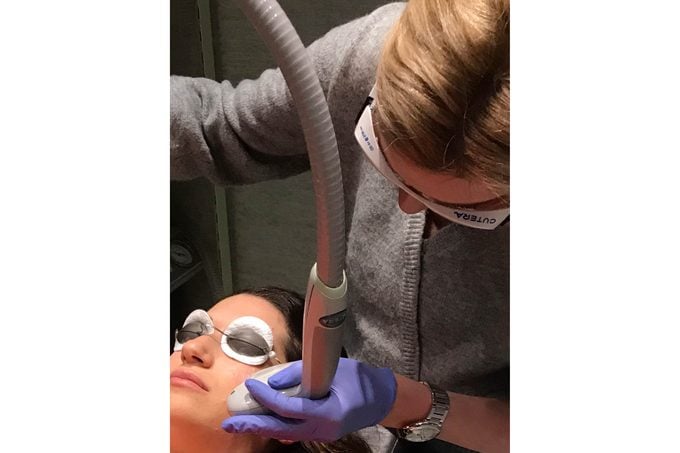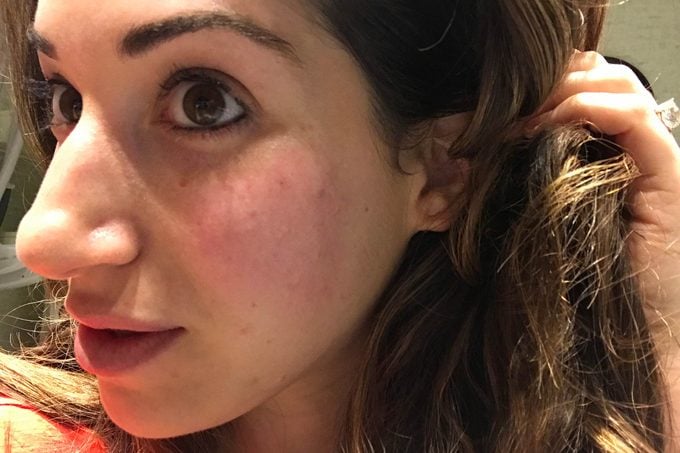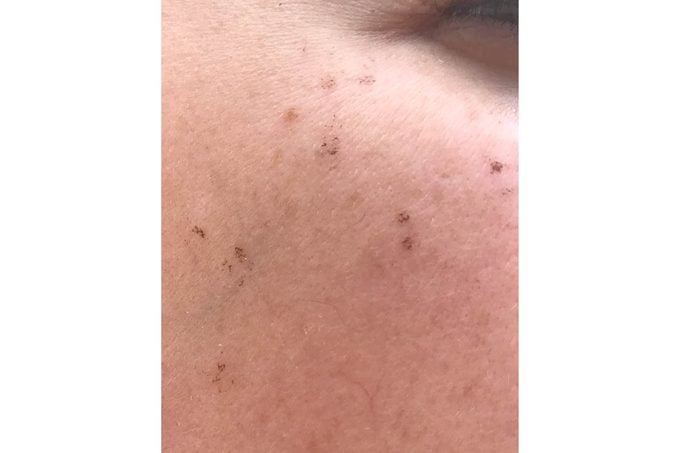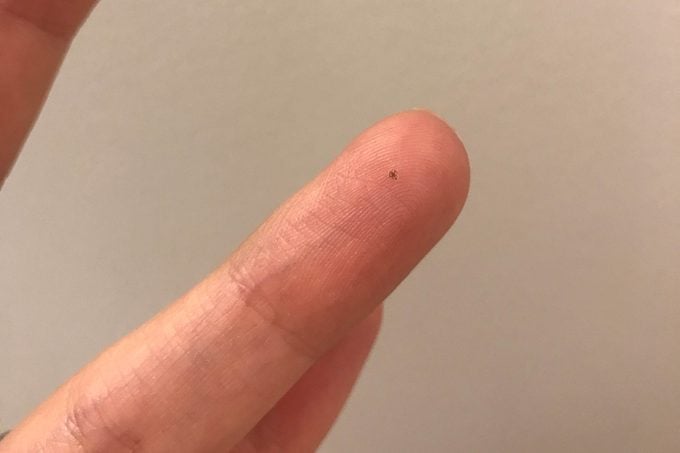I Tried Lasers for Melasma—and Here’s What Happened
Updated: Mar. 14, 2020
I developed melasma, or small spots on my face, during pregnancy. I tried a laser treatment to fix the skin problem, and here's how it went.

I had my first child when I was 24, when just about everything in my body was running like clockwork and my skin held up perfectly to all the normal trials of hormonal swings and weight gain. During that pregnancy, I didn’t have a single skin problem or stretch mark, remaining virtually unscathed, and naturally lucky. I was close to 30 years old by the time I had my third child, and I developed very small, slightly dark patches of skin on my face (what I would then learn to be melasma). They were so light and easily hidden with tinted moisturizer I didn’t give them a thought. I was 32 years old and pregnant with baby number four when freckles began to appear on my face. (Here are some skin-care rules everyone with freckles should know.)
Melasma spots
The wide, soft brown freckles took me by surprise because I wasn’t born with them, I didn’t have them growing up—I didn’t even have them a few months before. Apparently, they were a sort of “gift” I got while carrying my fourth baby. At some point I asked my ob-gyn what the spots were and if they meant anything for my health. “You have melasma spots,” she replied. “They come with the hormonal territory, and they’re nothing to write home about. You can deal with them after the baby is out.” We didn’t talk about it again, and I went on with pregnancy and life.
Five months after my baby was born, I became more proactive about treating the spots. My regular tinted cream couldn’t do the job anymore. It was time to talk to a dermatologist. I made an appointment with New York City-based dermatologist and creator of Sea Radiance skin care, Debra Jaliman, MD, to ask “What is melasma, anyway?”

“Melasma, also called the mask of pregnancy, is very common,” she explained to me. “It looks like dark brown discoloration that appears on the forehead, cheeks, or upper lip and it can occur in up to 50 percent of pregnant women,” she says. “Pregnancy hormones make skin more sensitive to sunlight, which is why it’s important to wear SPF 30 sunscreen every day when you find out you’re pregnant.” (Here are some important sunscreen myths.) Research underscores Dr. Jaliman’s advice: A 2014 study in the Indian Journal of Dermatology shows that pregnant women who engage in outdoor activities—that would be me—are particularly likely to develop melasma.
Melasma laser treatment
I felt better knowing that I wasn’t alone, but obviously wanted to find out what melasma treatments were available for me—and how effective they are. After a careful inspection of the mocha-colored spots strewn about my cheekbones, Dr. Jaliman said, “This shouldn’t be too hard. We’re going to zap your affected areas with an Acutip laser. The treatment will take just a few minutes and the laser itself will bring the pigment to the surface of the skin, where it will eventually crust and scab and then just fade away.” (Here’s more skin-care tips from dermatologists.)

How could anything that would scab or crust be painless, I wondered. Dr. Jaliman was right: The laser felt like someone was gently flicking me with their fingers—there really wasn’t any pain. My skin felt a little warm the rest of the day and it was red for a few hours following the treatment. The next morning was the shocker: I woke up to see my formerly pale brown melasma looking very dark. The following day the spots were even darker; it looked like I had taken a Sharpie to my skin. I was definitely concerned, but figured I’d let it go a couple more days.

Skin post-treatment
Three days post-treatment, my spots literally started flaking off in my hands. While washing my face before bed, large freckle-like spots actually fell onto my fingers. My husband thought I was insane because I was yelping from the bathroom. I’ve never had the experience of wiping spots off my skin as if they were stickers. I couldn’t believe it. On day four, the spots continued to flake and wear off almost like I had done a poor job of removing dark makeup.
Little by little, day by day, I noticed my skin return to the smooth, unblemished complexion I’d had five years and two children ago. “With Acutip it can take a patient up to four weeks, but there’s gradual improvement,” explains Dr. Jaliman. “The results are permanent unless you go back into strong sunlight without proper protection. In such cases, it can take a few treatments.” I’m wearing my sunscreen religiously and marveling at the way my skin looks.